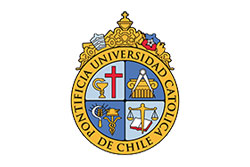Source: The City Fix
“Road space is the most valuable space a city has; it’s more important than diamonds,” according to former Mayor of Bogotá Enrique Penalosa, who oversaw the first phase of the Colombian capital’s bus rapid transit (BRT) system, known as TransMilenio, which celebrates its 10th anniversary this month.
Ten years ago, Bogotá’s streets were invaded by a disorganized and outdated network of individually owned vehicles. The city of 7.5 million people was highly polluted and congested, and “businesses around transit corridors were declining and closing or were replaced by low-key pawn shops, auto part shops, and even smutty nightclubs and hourly motels,” says Dario Hidalgo, director of research and practice at EMBARQ. “Public space was encroached by hawkers and cars parked on top of sidewalks.”
Today, merely a decade after the implementation of TransMilenio, the city is a shining example of how integrated transit policies and transportation networks can transform the urban environment.
“After the system was launched, the city regained hope,” Hidalgo adds. “People started believing that good things can be done.”
TransMilenio brought a revival to the transit corridors of the city. The high-capacity bus system now boasts 84 kilometers of busways, 104 stations, 10 integration points, integrated feeder services and advanced centralized control. It includes more than 1,000 buses that move 1.6 million passengers per day. And TransMilenio’s Avenida Caracas is known as the best performing single BRT corridor in Latin America, in terms of peak usage, transporting 43,000 passengers per hour in each direction, according to the report, “Modernizing Public Transportation”.
Bogotá has become so easy to navigate by public transportation that its citizens approved a referendum endorsing an annual car-free day. (Despite citizen interest, there were not enough votes to approve a referendum to make the city car-free by 2015). TransMilenio’s implementation has occurred alongside the installment of one of the world’s most extensive network of bike paths, CicloRuta, as well as hundreds of new parks and plazas. Businesses are thriving. New homes have been constructed. And the ultimate benchmarker of success: nearly a million people, or 10 percent of the population, have left their cars at home for a more convenient and cost-effective public transportation system.
However, the system is not without need for improvement. Bureaucratic contracts with service providers make tweaking small components of the system difficult. And as Hidalgo says, “The TransMilenio system still needs attention and improvements, especially in two aspects: buses and selected stations are overcrowded and road surface needs permanent and timely maintenance.”
Given TransMilenio’s central role in improving transit and quality of life in Bogotá, and its importance for elevating the concept of BRT globally, we’ll be celebrating TransMilenio’s first decade over the next few weeks. Stay tuned for photo essays from The City Fix and the release of a new EMBARQ case study on Bogotá’s bus system improvement.
¿Comments? ¿Opinions? ¿Similar News? Send them to us!













